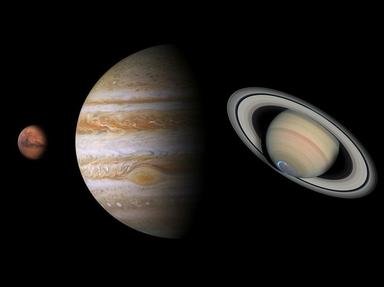Quiz Answer Key and Fun Facts
1. Sedna has an extremely eccentric orbit around the Sun, ranging from 76 AU at its closest and 937 AU at its farthest point. How long does it take for Sedna to complete a single orbit around the Sun?
2. Due to its orbit, Sedna is considered to be in which part of the Solar System?
3. Upon its discovery, Sedna was thought to have a binary companion like Charon is to Pluto. Why was this suggested?
4. Why was this object given the name of the Inuit goddess Sedna?
5. Sedna is perhaps one of the most controversial planetoids ever discovered, spawning many theories as to how its orbit was attained. Which of these was never stated as a serious possibility to explain how its eccentric orbit was achieved?
6. Much like how Pluto lent its name to objects called plutoids, Sedna has given its name to a class of objects called sednoids. What must an object do to be classified as a sednoid?
7. Unlike many faraway objects, Sedna was not discovered with the Hubble Space Telescope. What was the equipment to discover it?
8. By the IAU's standards, despite likely fitting the bill, why is Sedna not officially called a dwarf planet?
9. It is known that Sedna is largely consistent in surface color. What does this imply about its surface?
10. Infamous for its bizarre nature upon discovery, Sedna even led to the announcement of a 2016 theory of a super-earth orbiting in the outer reaches of the Solar System.
Source: Author
jonthomas
This quiz was reviewed by FunTrivia editor
rossian before going online.
Any errors found in FunTrivia content are routinely corrected through our feedback system.

